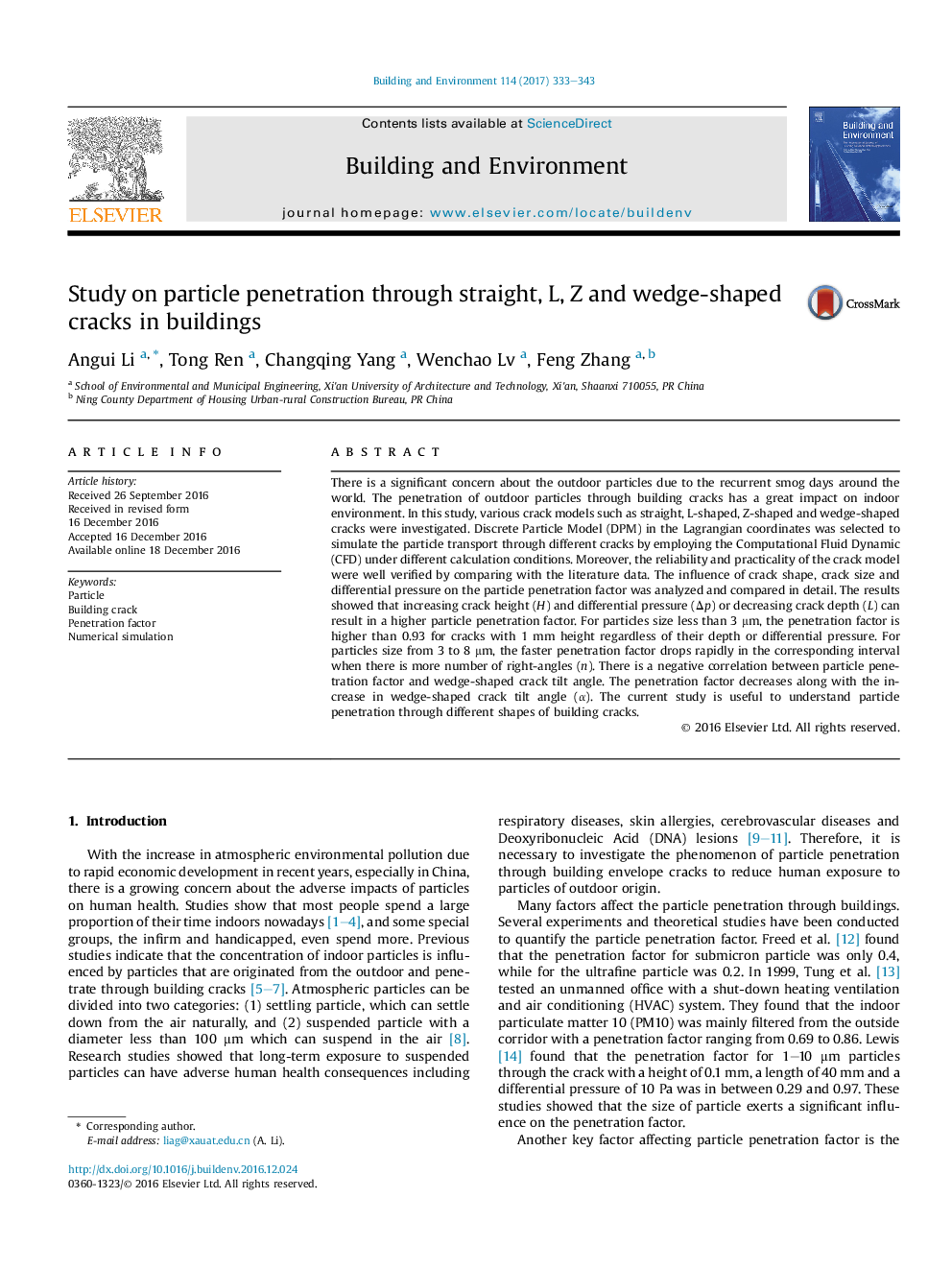| Article ID | Journal | Published Year | Pages | File Type |
|---|---|---|---|---|
| 4917427 | Building and Environment | 2017 | 11 Pages |
Abstract
There is a significant concern about the outdoor particles due to the recurrent smog days around the world. The penetration of outdoor particles through building cracks has a great impact on indoor environment. In this study, various crack models such as straight, L-shaped, Z-shaped and wedge-shaped cracks were investigated. Discrete Particle Model (DPM) in the Lagrangian coordinates was selected to simulate the particle transport through different cracks by employing the Computational Fluid Dynamic (CFD) under different calculation conditions. Moreover, the reliability and practicality of the crack model were well verified by comparing with the literature data. The influence of crack shape, crack size and differential pressure on the particle penetration factor was analyzed and compared in detail. The results showed that increasing crack height (H) and differential pressure (Îp) or decreasing crack depth (L) can result in a higher particle penetration factor. For particles size less than 3 μm, the penetration factor is higher than 0.93 for cracks with 1 mm height regardless of their depth or differential pressure. For particles size from 3 to 8 μm, the faster penetration factor drops rapidly in the corresponding interval when there is more number of right-angles (n). There is a negative correlation between particle penetration factor and wedge-shaped crack tilt angle. The penetration factor decreases along with the increase in wedge-shaped crack tilt angle (α). The current study is useful to understand particle penetration through different shapes of building cracks.
Related Topics
Physical Sciences and Engineering
Energy
Renewable Energy, Sustainability and the Environment
Authors
Angui Li, Tong Ren, Changqing Yang, Wenchao Lv, Feng Zhang,
